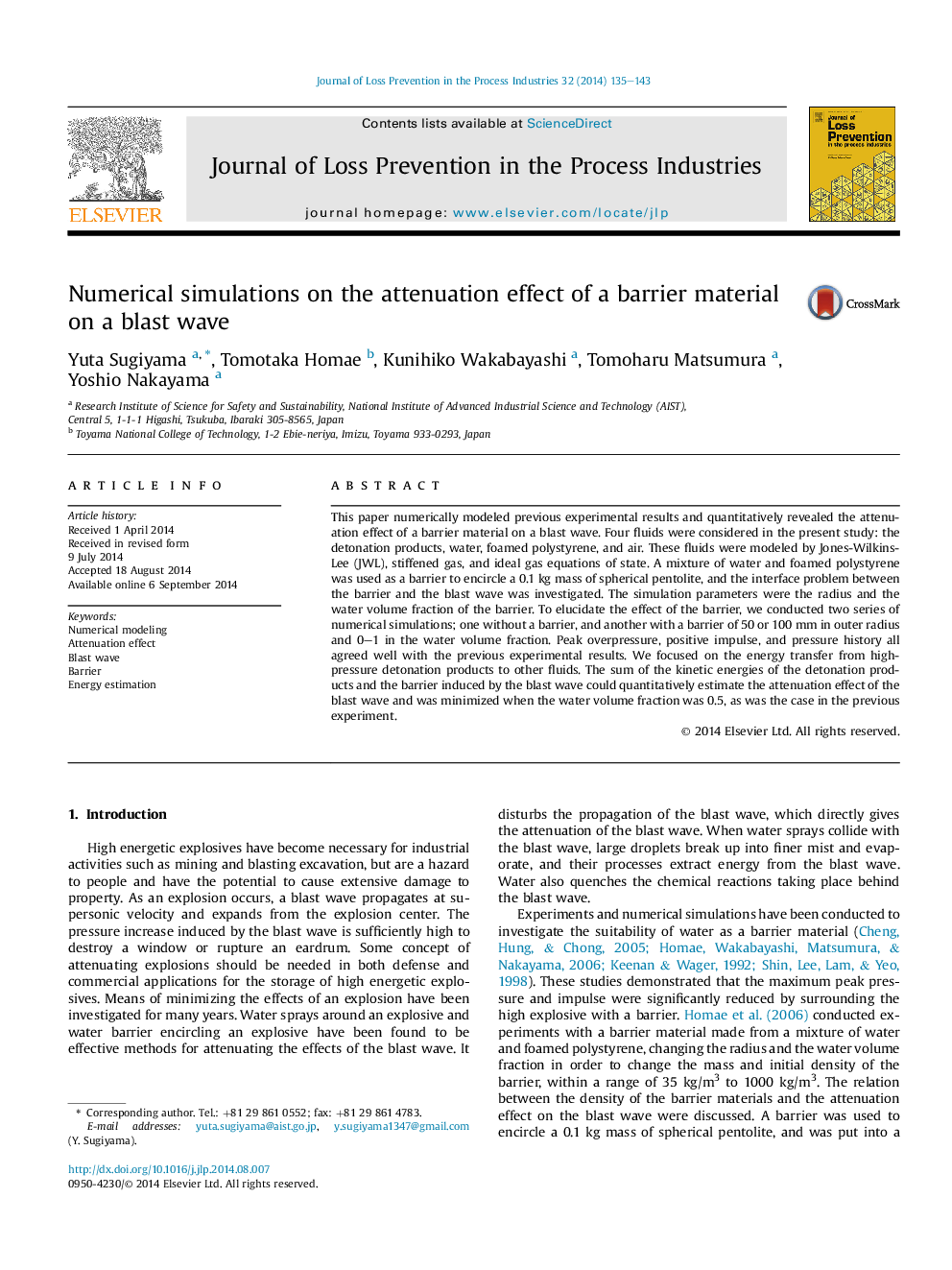| Article ID | Journal | Published Year | Pages | File Type |
|---|---|---|---|---|
| 6973489 | Journal of Loss Prevention in the Process Industries | 2014 | 9 Pages |
Abstract
This paper numerically modeled previous experimental results and quantitatively revealed the attenuation effect of a barrier material on a blast wave. Four fluids were considered in the present study: the detonation products, water, foamed polystyrene, and air. These fluids were modeled by Jones-Wilkins-Lee (JWL), stiffened gas, and ideal gas equations of state. A mixture of water and foamed polystyrene was used as a barrier to encircle a 0.1Â kg mass of spherical pentolite, and the interface problem between the barrier and the blast wave was investigated. The simulation parameters were the radius and the water volume fraction of the barrier. To elucidate the effect of the barrier, we conducted two series of numerical simulations; one without a barrier, and another with a barrier of 50 or 100Â mm in outer radius and 0-1 in the water volume fraction. Peak overpressure, positive impulse, and pressure history all agreed well with the previous experimental results. We focused on the energy transfer from high-pressure detonation products to other fluids. The sum of the kinetic energies of the detonation products and the barrier induced by the blast wave could quantitatively estimate the attenuation effect of the blast wave and was minimized when the water volume fraction was 0.5, as was the case in the previous experiment.
Related Topics
Physical Sciences and Engineering
Chemical Engineering
Chemical Health and Safety
Authors
Yuta Sugiyama, Tomotaka Homae, Kunihiko Wakabayashi, Tomoharu Matsumura, Yoshio Nakayama,
